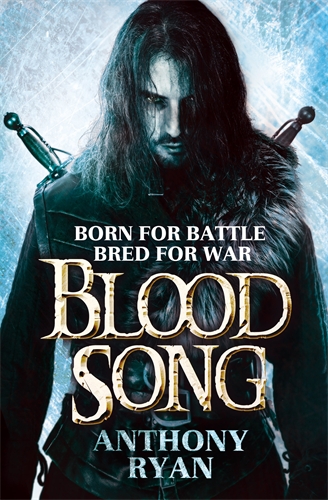Anthony Ryan’s Top 5 Movie Battle Scenes
 This summer’s epic fantasy blockbuster BLOOD SONG is packed full of exciting action sequences, so we asked author Anthony Ryan to tell us his favourite movie battle scenes.
This summer’s epic fantasy blockbuster BLOOD SONG is packed full of exciting action sequences, so we asked author Anthony Ryan to tell us his favourite movie battle scenes.
Here are Anthony’s choices, in no particular order!
Saving Private Ryan – Omaha Beach (1998, Dir. Steven Spielberg)
The immediate cinematic impact of Spielberg’s recreation of the Omaha beach landings makes it easy to forget that there was a time when filmmakers failed to present the experience of modern battle as anything other than a stark horror story viewed through the lens of an over-cranked camera. But, despite its many imitators, the real-time progress of Tom Hanks’ shell-shocked captain across the blasted and corpse strewn shore-line has never been topped for sheer visceral shock value. If you ever wondered what a burst of machine-gun fire will really do to a human body, look no further.
Henry V – Agincourt (1989, Dir. Kenneth Branagh)
Branagh’s directorial debut proved he’s as able behind the camera as he is in front of it. Naturalistic Shakespeare is a tricky thing to pull off but Branagh and cast manage it with admirable aplomb – even Brian Blessed gets through the whole film without a single shouty moment. Crucial to Branagh’s desire to present events within a believable medieval context is his depiction of the Battle of Agincourt as a mud-spattered slo-mo slogging match. Men in armour assail each other with swords, maces and daggers in a rain sodden charnel house shorn of any pageantry or chivalrous pretensions. Grimly compelling.
300 – “This! Is! Spartaaaaggh!” (2006, Dir. Zach Snyder)
Frank Miller’s stylised comic book version of the Battle of Thermopylae in 480 BCE is given lavish homage by Snyder as muscular bare chested men in leather pants engage in a mutual admiration fest before embarking on slo-mo Persian slaughter viewed through a series of prolonged tracking shots (for some reason 300 has come to be regarded as having a strong gay subtext, can’t think why). This is an unashamedly non-realist approach to ancient warfare featuring battle-rhinos, giants and grenade throwing alchemists – and is all the better for it.
The Return of the King – Pelennor Fields (2003, Dir. Peter Jackson)
The Battle of Helm’s Deep in The Two Towers was a remarkable achievement in itself but even that is eclipsed by the sheer scale of the spectacle offered in Peter Jackson’s final instalment of The Lord of the Rings. Sauron’s hordes of orcs, easterlings and war elephants bear down on the beleaguered city of Minas Tirith in a screen-filling tide that wouldn’t have been possible even in the days when extras would work for less than a dollar a day. However, thanks to CGI we are treated to an unrestrained and largely faithful depiction of the central clash of armies in Tolkien’s classic. From the Ride of the Rhohirrm to the arrival of the Dead Men this is a wondrous spectacle, made all the more impressive by not allowing the visuals to overwhelm the drama – poor old King Theoden, but it was a good death.
Glory – Assault on Fort Wagner (1989, Dir Edward Zwick)
The 54th Massachusetts Infantry was the first black regiment recruited by the Union Army in the American Civil War and earned a blood-soaked place in history by leading an assault on the Confederate Fort Wagner in South Carolina in July 1863. Zwick – later to conjure some highly impressive set-pieces in The Last Samurai – brings home the scale of the sacrifice as Matthew Broderick’s Colonel Shaw leads his troops in an ultimately hopeless charge against the Confederate ramparts, braving a hail of cannon fire and musketry to fight their way into the fort at bayonet point. Although the film makes no bones about the fact that this was a military defeat for the Union, the final scene of black troops and white officers being tossed into the same mass grave conveys a sense that it was at least a battle worth fighting.
